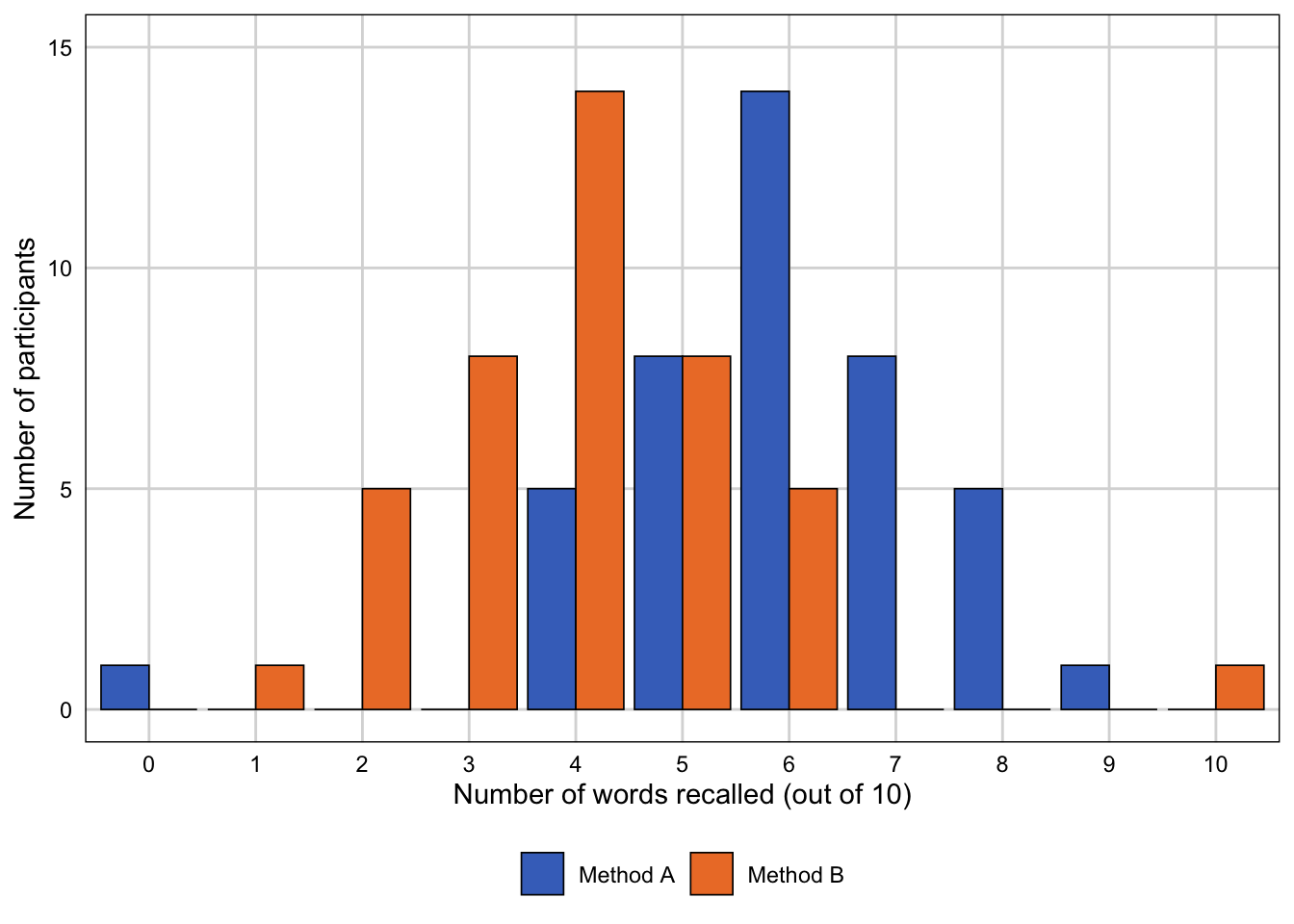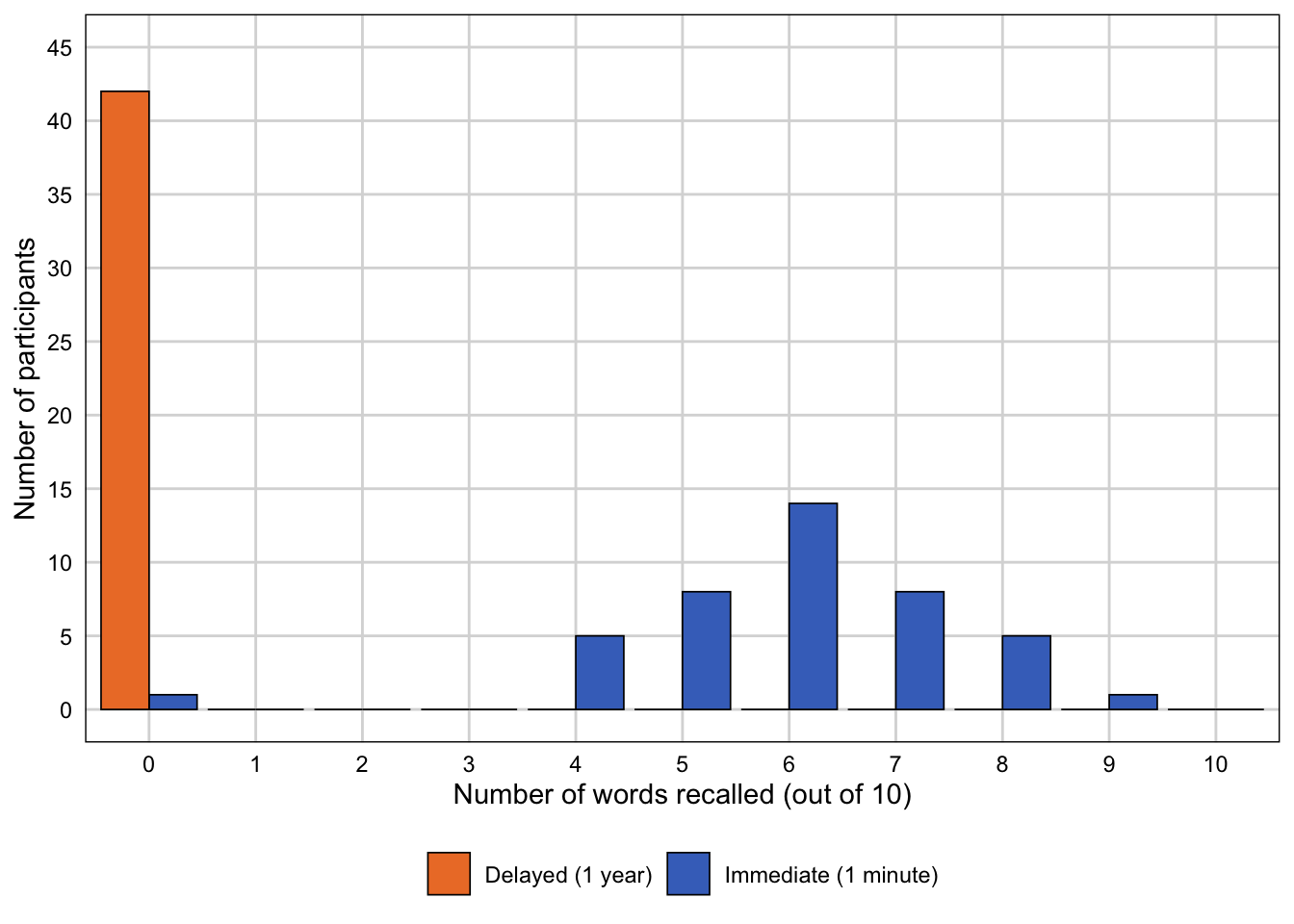
Memory Study Scenarios
Materials for Stage 1 Tutorial
Scenario 1: Method A vs Method B
Imagine that you ran a study in which you tested Plymouth students on their memory for a study list of 10 words.
You randomly allocate the students to two groups:
- One group were asked to study using Method A
- The other group were asked to study using Method B
Overall, you find that on average people studying using Method A recalled more (Mean = 5.9/10) than those in Method B (Mean = 4.0/10).
The results looked like this:

Question
What can you conclude from this study? Check the boxes for the conclusions you agree with.
Scenario 2: Immediate vs Delayed Recall
Imagine that you ran a study in which you tested Plymouth students on their memory for a study list of 10 words.
You randomly allocate the students to two groups:
- One group were tested 1 minute after the list had been presented
- The other group were tested 1 year after the list had been presented
Overall, you find that people tested immediately have better memory (Mean = 5.9/10) than those tested after 1 year (Mean = 0/10).
The results looked like this:

Question
What can you conclude from this study? Check the boxes for the conclusions you agree with.